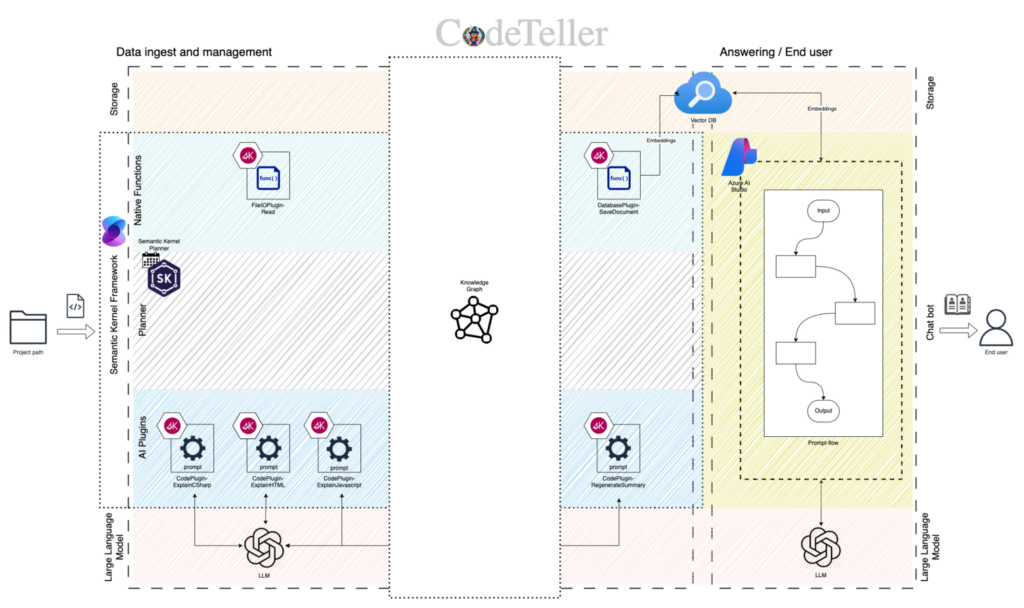CodeTeller: Part 3. The Power of Generative AI and Semantic Kernel

Solution Architect

In the latest installment of our series on CodeTeller, we dive into the evolving world of Generative AI (GenAI) and its pivotal role within the CodeTeller framework. This innovative concept leverages Microsoft’s Semantic Kernel (SK) alongside GenAI to transform technical code into human-readable explanations. Why does this matter? Because it represents a significant leap toward making technology more accessible and understandable for non-technical individuals. In this article, you’ll learn:
- How GenAI powers the translation of complex code into simple, understandable language.
- The components of the Semantic Kernel and how they contribute to this process.
- Practical examples of how CodeTeller utilizes these technologies to bridge the gap between coding and comprehension.

Diving Into Generative AI
Generative AI refers to the subset of AI technologies capable of generating new content based on the data they’ve been trained on. Within CodeTeller, GenAI is used to interpret and explain programming code in layman’s terms. This capability is crucial for fostering better communication and understanding between technical teams and business stakeholders, eliminating barriers to tech engagement.
Diving Into Semantic Kernel
The Semantic Kernel (SK) framework is at the heart of CodeTeller’s functionality. It comprises several key components:
- Kernel: Acts as the central hub where connectors and plugins are registered and configured.
- Memories: Provide context for user queries by recalling past interactions, enhancing the relevance and accuracy of responses.
- Planners: Generate execution plans based on user prompts, utilizing various strategies for different needs, such as SequentialPlanner for complex, multi-step requests and BasicPlanner for simpler tasks.
- Plugins: Offer a range of functions, from AI Plugins that interact with users through natural language to Native Functions for tasks unsuitable for AI, like mathematical calculations or API calls.
Picture This Scenario
Imagine needing to understand a piece of code written in an unfamiliar programming language. Traditionally, this would require significant effort and technical knowledge. With CodeTeller, however, you can simply ask for an explanation. The system uses its semantic plugins to identify the code’s language, translates it into English, and then, by leveraging the power of GenAI, generates a clear, concise summary. This process not only simplifies comprehension but also democratizes access to technical knowledge.

The Challenge
A key challenge in translating code to human-readable language is maintaining accuracy and context. CodeTeller addresses this through its sophisticated use of Semantic Kernel components, ensuring that explanations are both accurate and relevant to the user’s query.
Why It’s a Big Deal
The integration of Generative AI within the CodeTeller concept represents a monumental stride towards making technology more accessible. By translating complex programming languages into simple English, CodeTeller not only enhances communication between technical and non-technical teams but also empowers individuals with the knowledge they need to make informed decisions. As we delve deeper into the capabilities and potential of CodeTeller, let’s fully embrace the opportunities it offers for fostering greater inclusivity and understanding within the technological realm.
Looking Ahead
Stay tuned for our next article, where we’ll explore the unexpected challenges encountered with the CodeTeller concept and the lessons learned from these experiences.
